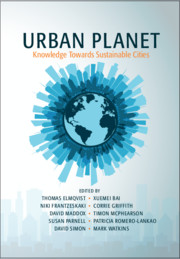In the next 50 years, we need to transform every piece of urban landscape into a form that best supports the survival of the human race. This new urban landscape will increasingly provide our life support system, not just for air, water, and food – it must also become our refuge for creative inspiration and a catalyst for imagination.
I propose “Forests of Imagination” as a new type of urban landscape designed to evoke a sense of primal landscape and to encourage creative thoughts. They can be permanent or temporary, but their purpose will be to offer a particular place that reconnects us with the wonder, moods, and meaning of raw nature while offering inspirational experiences. I would like to see every community having easy access to a Forest of Imagination.
Wildness is synonymous with inspiration and contemplation. William Shakespeare, Percy Bysshe Shelley, Virginia Woolf, Albert Einstein, Rachel Carson, David Attenborough, Lucille Clifton all have used elemental nature as a source of inspired thought. I suggest we all need wildness in our daily lives to feed our imagination, just as we need vitamins to sustain our bodies. Charles Darwin recognized this need and made his own famous Sand Walk at Down House in Surrey, England. This provided him with a five-minute walk that passed through a formal garden, an open meadow, and the dark heart of a wood. This was his choice of place to think and be inspired by the natural world around him – his Forest of Imagination – which inspired him towards one of the greatest discoveries of all time.
In modern times, we have planned our cities around function and commerce, where nature is seen as a commodity to harvest, to set the scene, to provide air and water and food – but not as a fundamental part of our existence and certainly not as a source of natural wonder and inspiration. Instead, the modern city has tempered the wildness of nature to create an idyllic, gentle world far removed from the unpredictable “garden” of nature. Matt Ridley said, “Mountains may have more majesty, forests more fear … formal gardens more symmetry – but it is the informal English parkland of Capability Brown that you would choose for a picnic, or for a visit with a potential lover. It feels natural” (Ridley Reference Ridley2016). Such ideas of nature have inspired countless urban parks across the world, but at what cost? The removal of encounters with more unexpected and challenging natural experiences within our cities has effectively anesthetized our engagement with the land and the very systems of life on which we rely.
Recent flooding in many UK cities has triggered a collective memory of our forgotten relationship with rivers and floods and weather. This echoes the astonishing growth of the Rewilding movement in the United Kingdom and across Europe, which is partly about ecological restoration of strategic habitats. But it’s also about our emotional reconnection to nature. It promotes the reintroduction of key predators and keystone species into the wilder areas of our landscapes, but so far has not fully addressed the opportunities within cities. Anna Jorgenson of Sheffield University suggests that “we all need wildness” as both a projection of ourselves and also as a way of making sense of the world that is beyond our imagination (Jorgensen Reference Jorgensen2016). Her experiments into urban rewilding, based on the insertion of pockets of naturalized planting into more traditional parks, are proving there is an appetite for this urban wildness that, if introduced intelligently, can greatly enhance not just the working ecosystem of the city, but also the daily health and well-being of the local communities. It seems we are ready to be challenged and to welcome back the unknown and uncontrolled into our city environments. Still, just creating an additional urban habitat is not enough. These spaces must function at a higher level of engagement, since landscape can no longer be seen as the passive backdrop and stage set of Capability Brown and his followers. To survive the future, we need to foster curiosity, analysis, and understanding – but we also need spaces to encourage unimagined new worlds.
To achieve these goals, there has to be a major reinvention of our permanent public landscapes; large-scale changes can be complemented by a program of more experimental, temporary Forest installations. In my home city of Bath in the United Kingdom, we have introduced our own pop-up Forest of Imagination. This is a project about the creative ecology of the city and involves collaboration across generations and between industries. For the last three years, we have transformed a familiar but neglected piece of the city into an abstract Forest, brought to life by artists and scientists, carpenters, architects, landscape architects, school children, college students, parents, grandparents, young and old. It echoes Darwin’s Sand Walk. It is a place to be inspired and where a number of different and dramatic experiences, light and dark, funny and sad, colorful and dull, are created around the theme of Forest. Here, the Forest is the home of Imagination.
I believe every community should have their Forest of Imagination, where people are invited to rediscover nature and which generate intuitive responses of delight and fear, senses of beauty and horror. Whether permanent or temporary, these Forests of Imagination can foster the creative genius present in each community and city. At a time when the future of humanity is on a perilous brink, they can and must inspire our future.



